ARTICLE Categories
All
|
|
You’ve probably heard that Vitamin D is important, but did you know that it can be critical if you suffer from eczema/dermatitis?
This is why one of the first questions I ask clients is whether they know their Vitamin D3 status. Do you know yours? If you want to know more about how vitamin D or the lack thereof might be influencing your skin health, read on. Today’s article covers:
What is vitamin D3 and why is it important? Vitamin D3 starts off as cholecalciferol which we, in the main, absorb through our skin through UVB or sunlight exposure. The cholecalciferol then goes through numerous processes in the liver and kidneys to become what is known as a biologically active form, or a form that our body can easily use, calcitriol. Vitamin D3 is, in fact, more of a hormone than a vitamin and it acts as a signaller to tell hundreds of genes what to do. We have Vitamin D Receptors (VDR) throughout our body that are just waiting for the calcitriol to come and bind with them. This binding of the calcitriol and the VDR triggers a cascade of vital bodily processes via genes from bone health and calcium metabolism to inflammation and heart health amongst many others. Vitamin D is most known for its effects on bone health as it helps calcium and phosphorus be absorbed from the gut, essential for the building and formation of strong bones. Low Vitamin D levels are linked to weak bones (Rickets) in children and osteomalacia (bone softening) in adults. (1) Vitamin D is known to have anti-inflammatory properties, which is very useful if you are prone to inflamed skin as most eczema/dermatitis sufferers are. (2) Vitamin D is thought to be important for heart health including hypertension and also brain health, due to the vast number of VDRs that can be found in brain tissue. (3) How gene variations can have an impact on your Vitamin D levels Gene variations you may have can, in some cases, impact on vitamin D availability or how responsive your receptors are to receiving the calcitriol. If a client comes to me and says that their Vitamin D3 levels are always low, then I would suspect a genetic variant at play either on the GC gene which controls supply of Vitamin D Binding Protein (VDPR) important for transporting Vitamin D around the body or variances on the VDR gene itself, meaning that receptors are less keen to receive and bind to the circulating Vitamin D. Another gene variation linked to Atopic Eczema is filaggrin. Vitamin D influences the production and function of skin proteins including filaggrin, so maintaining your Vitamin D levels if you suffer from atopic dermatitis is especially important. Nutrigenomics testing can be helpful to see gene variances in relation to things like Vitamin D, inflammation or susceptibility to lactose or gluten intolerance amongst many others. I use Lifecode Gx as they provide a variety of reports that can help me unravel a great deal about an individual’s genes and how they are impacting their skin health. Vitamin D and its specific role in Atopic Dermatitis/Eczema Vitamin D is also vital for the growth and repair of skin cells. It supports your skin barrier, which means that it is more resistant to attacks, and it has anti-inflammatory properties that are, as I’ve already mentioned, crucial for skin conditions like dermatitis and psoriasis. The interesting thing is that the science is clear. If you have eczema, it is very likely that your Vitamin D test results will show that you are Vitamin D deficient. Atopic Eczema sufferers specifically are more likely to be more Vitamin D deficient than the normal population. Have you tested your levels recently? How can Vitamin D help if you have dermatitis/eczema? Research has shown that maintaining vitamin D levels can lead to a significant reduction in eczema symptoms, especially inflammation and infection. This is especially clear in the winter months when exposure to sunlight is so much lower. Many of my clients report that their skin naturally improves in the summer months. (4) As mentioned above, vitamin D helps keep your skin water and infection ‘tight’ thanks to its action on filaggrin, amongst other skin proteins. If your skin is ‘leaky’ you are more at risk of infection or even allowing a contact allergen to trigger a flare. A healthy skin barrier helps retain moisture as well, and we all know how much moisture a dermatitis sufferer needs to retain ! (5) How you can ensure that you are getting enough, whilst being careful to not have too much. As you may have noticed throughout the article, an optimal (serum) level of Vitamin D3 is vital for health but is also critical for skin health and eczema. Good sources of Vitamin D3 include:
It is important to note that more is not necessarily better. Too much Vitamin D, specifically from supplementation, can be dangerous for your health. If in any doubt check with a health or nutrition practitioner and test to see where your starting levels are. Sign up for my news to get useful, usable information, resources and offers straight to your inbox. References.
0 Comments
Mast Cell Activation Syndrome (MCAS) is a complex condition that has been gaining attention in the medical community for its role in a variety of symptoms and diseases, including skin conditions such as eczema and dermatitis. (1–3) This article aims to shed light on what MCAS is, how it’s diagnosed, its connection to skin conditions and potential management strategies. What is MCAS? MCAS is a condition where mast cells, a type of white blood cell that play a crucial role in the body’s immune response, behave abnormally, triggering immune related symptoms. Mast cells play a pivotal role in the management of inflammatory responses, acting as the defensive guardians against pathogens. These cells are found in tissues throughout the body, especially where the body is exposed to contact with foreign bodies, such as the skin, lungs, and digestive tract. When mast cells detect a foreign substance or an injury they release a variety of different chemical signals including histamine, cytokines, and growth factors, which are all part of the body’s defence systems. This is normal and what keeps us healthy. Normally, mast cells help protect the body from disease and aid in wound healing but in MCAS these cells are overly sensitive and release too many of these chemicals leading to a range of symptoms that can affect every part of the body, including the skin, gastrointestinal, cardiovascular, respiratory and neurological systems. Long COVID is also thought to involve aspects of MCAS. Symptoms and Diagnosis The range of symptoms involved in MCAS are vast and can vary significantly from one individual to another. Reported symptoms include: flushing, itching, urticaria (hives), stomach pain, nausea, vomiting, diarrhoea, low blood pressure, headaches and breathing issues. The severity of symptoms can range from mild to life-threatening. As you can tell these are symptoms that can overlap with many other conditions making diagnosis tricky. Officially there are three sets of criteria needed for MCAS diagnosis:
The MCAS, Dermatitis Connection The skin is one of the organs most commonly affected by MCAS and dermatitis (atopic, contact and urticaria) is the most common skin illness linked to this condition. Dermatitis, characterised by inflammation of the skin, can be exacerbated by the overactive release of histamine and other chemicals from mast cells, leading to redness, itching, and swelling, all symptoms so characteristic of this chronic skin condition. The different types of eczema/dermatitis have multifactorial root causes including genetic, environmental and immune system factors. The link between MCAS and dermatitis is found within the immune system, particularly in how mast cells can over secrete the chemicals that can exacerbate an existing flare or trigger a new one. A combination of MCAS with chronic, relapsing dermatitis can cause misery for sufferers. Histamine, one of the most well-known mediators released by mast cells, is involved in immediate allergic reactions and plays a significant role in vasodilation or increased blood flow, and recruitment of other immune cells to the site of injury or infection. If you are interested in learning more about histamine, I have written a series of 5 articles relating to histamine, which can all be found via my website. Understanding the role of mast cells in immune responses and their contribution to conditions like MCAS and dermatitis underscores how intertwined both the immune system and skin health is. What is important to bear in mind is the need for support that may modulate mast cell activity but also alleviate the dermatitis symptoms. Management strategies for MCAS-Related Dermatitis Managing diagnosed MCAS and dermatitis needs a rounded approach that takes into account both the overactive mast cells and the dermatitis symptoms. Here are some tips that may help:
In summary, MCAS is a multifaceted condition that can significantly impact the physical and mental wellbeing of affected individuals. Having a medical diagnosis that then provides an appropriate treatment plan that alleviates symptoms is important, however, understanding the root cause of the hyper-activation be it food, environmental, lifestyle factors or stress is vital for long-term health. References.
Sign up for my news to receive the published articles straight to your inbox. Read more by clicking below to see my previously published articles:
I’m Jessica Fonteneau, the Eczema and Digestive Health Nutrition Expert. I’ve worked with hundreds of clients to help them change their diets, better manage their flares, and find relief. My vocation is to help those with eczema and digestive issues, because I have suffered with these interlinked conditions since I was 6 months old, and I truly know what it is like to experience these debilitating conditions. Every client I have ever worked with has their own triggers and ideal nutrition. There is no such thing as ‘one-size-fits-all’. Whether you work with me one-to-one or use my guided tools, my objective is to help you uncover what works best for you, so that you take back control and experience relief. My guided programmes are only suitable for adults as children have very specific nutrition requirements. I do, however, work with many child clients as part of my clinic. I also offer two free communities for adults caring for children with eczema and digestive symptoms, feel free to come and join us and get some well-deserved support.
To easily keep up with my articles, masterclasses, ebooks and online programmes and receive exclusive access to early bird offers, sign-up to my newsletter. Interested in what I do and who I am? Go to my website: www.jessicafonteneaunutrition.com As I look out the window and watch the endless, pouring rain, I think of a dermatitis trigger that loves this type of weather, mould.
There have been quite a few truly tragic stories in the media over the past year, highlighting the devastating impact mould can have on health, particularly in relation to respiratory conditions, but did you even consider whether mould might be triggering your dermatitis flare? In this blog post, I’ll delve into the intricate relationship between mould exposure and dermatitis and explore ways to reduce the risks. A short mould overview. Mould refers to a type of fungus that thrives in damp and humid environments, basically the UK. Common indoor moulds include Aspergillus, Fusarium Stachybotrys chartarum and Clasporium Herbarum. Stachybotrys chartaruium and Clasporium Herbarum are visible as black mould, but some other moulds are practically invisible to the naked eye. Mould tends to develop in areas that are out of sight. Just this week, I had a message from a client who said “you know you were questioning me around mould, and I said that there absolutely wasn’t any in my home? Well, we’ve just changed the floor in our kitchen and guess what we found under the lino”. Moulds, including the infamous black mould, thrive in damp environments such as kitchens, basements, and bathrooms. They can grow on various surfaces, including paper, wood, and fabrics. When mould touches the skin, or when individuals with a mould sensitivity inhale the spores, it can trigger different types of skin rashes characterized by redness, itching, swelling, and sometimes small bumps or blisters. Dermatitis, what does it encompass? Dermatitis is a broad term encompassing a whole host of skin conditions from Atopic Eczema to contact dermatitis and even Cutaneous Aspergillosis a skin condition directly linked to the Aspergillus mould. The Mould/Dermatitis Connection Research has shown a compelling connection between mould exposure and development or worsening of dermatitis symptoms. People who live or work in damp environments with high mould concentrations have been observed to be more susceptible to skin issues. It is believed that contact, either directly or via minute mould spores landing on the skin or being breathed in, can trigger inflammation that leads to the symptoms so common in dermatitis or eczema: red patches, itching and often pain. The most common types of dermatitis linked to mould are:
Mycotoxins Mycotoxins are toxic compounds produced by some mould species and which add another complex layer to the mould/dermatitis connection. These substances can enter the body through inhalation, ingestion, or skin contact. When mycotoxins come into direct contact with the skin, they can disrupt the skin barrier function, leading to increased permeability or leaky skin and higher risk of skin irritations. Mycotoxins have been found to trigger rosacea, eczema and even acne. Immune Response As previously touched on, both mould and mycotoxin exposure can trigger an immune response, leading to both inflammation and skin reactions. Whilst dermatitis isn’t considered an autoimmune condition, the constant igniting of the immune response is tiring for the body and can lead, in turn, to increased susceptibility to infections and inflammation. An exhausting vicious cycle. Diagnosis If you suspect that mould is triggering your skin, then you should go and see your GP for a diagnosis. Blood tests, finger-prick or patch testing can determine whether mould is an issue for you. Common medical treatments include over-the-counter antihistamines and cortisone creams. Nutrition practitioners also have access to some functional tests which may be useful. Tips for Prevention If you have recurrent dermatitis and are at a loss as to why it is constantly triggered, then it may be worth exploring whether mould might be a cause:
Sign up for my news to receive the published articles straight to your inbox. Read more by clicking below to see my previously published articles:
I’m Jessica Fonteneau, the Eczema and Digestive Health Nutrition Expert. I’ve worked with hundreds of clients to help them change their diets, better manage their flares, and find relief. My vocation is to help those with eczema and digestive issues, because I have suffered with these interlinked conditions since I was 6 months old, and I truly know what it is like to experience these debilitating conditions. Every client I have ever worked with has their own triggers and ideal nutrition. There is no such thing as ‘one-size-fits-all’. Whether you work with me one-to-one or use my guided tools, my objective is to help you uncover what works best for you, so that you take back control and experience relief. My guided programmes are only suitable for adults as children have very specific nutrition requirements. I do, however, work with many child clients as part of my clinic. I also offer two free communities for adults caring for children with eczema and digestive symptoms, feel free to come and join us and get some well-deserved support.
To easily keep up with my articles, masterclasses, ebooks and online programmes and receive exclusive access to early bird offers, sign-up to my newsletter. Interested in what I do and who I am? Go to my website: www.jessicafonteneaunutrition.com Foods, ingredients, or molecule intolerances appear to be on the rise and whilst some such as gluten or histamine are well known, others, such as salicylates, are more misunderstood. This article will delve into this lesser-known phenomenon exploring:
What are salicylates and what is a salicylate intolerance? Salicylates are natural chemicals found in many plants who use them to defend themselves against pests, bacteria, and environmental stressors. Salicylates are anti-inflammatory and as such have also been synthetically reproduced in laboratories for uses in medications, including aspirin and non-steroidal anti-inflammatories (NSAIDs) such as ibuprofen. Salicylic acid has excellent anti-fungal and anti-bacterial properties, leading to its common use as an ingredient in processed foods, condiments, cosmetics, and beauty products. In terms of food, salicylates are found in many plant foods to a higher or lesser extent. Some of the foods that are common triggers are:
Salicylate intolerance is where a person’s system has difficulty metabolising and tolerating salicylates, leading to a range of symptoms. The phenomenon was initially observed in medically diagnosed patients with either aspirin-exacerbated respiratory disease (AERD) or NSAIDs-exacerbated respiratory disease (NERD) (1,2). In the cases of both AERD and NERD, high doses of chemical salicylates can trigger asthma, rhinosinusitis and urticaria. Clinical case studies have observed that for some, simply eating a diet high in salicylates can contribute to a variety of symptoms, although this can vary from person to person and may also depend on the quantity of salicylates eaten or exposed to over a short period of time. Which symptoms are linked to salicylate intolerance? Whilst respiratory and skin symptoms are the most recognised symptoms of salicylate intolerance, there are others including:
What does the science say causes this condition? As with so many conditions, the exact cause of salicylate intolerance is not well understood, however there are some areas which are being explored:
How is salicylate intolerance medically diagnosed? Diagnosis of salicylate intolerance is tricky, mainly because of the number of overlapping symptoms with other conditions. A medical or nutrition practitioner will undertake:
For many, a salicylate intolerance is linked to other conditions or genetics and is not, itself, the root cause. Sufferers tend to go heavily down the elimination root, which whilst does initially provide relief, is not a sustainable or healthy long-term solution. Working with a practitioner to discover the main trigger of the sensitivity is key. Suggestions for managing a suspected salicylate intolerance.
If on medication, please speak to your GP/consultant before making any changes to your diet. Sign up for my news to receive the published articles straight to your inbox. Read more by clicking below to see my previously published articles:
I’m Jessica Fonteneau, the Eczema and Digestive Health Nutrition Expert. I’ve worked with hundreds of clients to help them change their diets, better manage their flares, and find relief. My vocation is to help those with eczema and digestive issues, because I have suffered with these interlinked conditions since I was 6 months old, and I truly know what it is like to experience these debilitating conditions. Every client I have ever worked with has their own triggers and ideal nutrition. There is no such thing as ‘one-size-fits-all’. Whether you work with me one-to-one or use my guided tools, my objective is to help you uncover what works best for you, so that you take back control and experience relief. My guided programmes are only suitable for adults as children have very specific nutrition requirements. I do, however, work with many child clients as part of my clinic. I also offer two free communities for adults caring for children with eczema and digestive symptoms, feel free to come and join us and get some well-deserved support.
To easily keep up with my articles, masterclasses, ebooks and online programmes and receive exclusive access to early bird offers, sign-up to my newsletter. Interested in what I do and who I am? Go to my website: www.jessicafonteneaunutrition.com References:
The trees begin to lose their leaves, and you sigh a great sigh of relief thinking that the hay fever and seasonal allergies season is finally over. Then you realise that you are still getting symptoms – itchy eyes, runny nose, a dermatitis flare. It is very possible and even probable that you are suffering from Autumnal allergies.
TV adverts and magazine articles would have you think that hay fever and seasonal allergies only happen in the spring and summer, but that isn’t the case. Autumn brings its own set of allergens ready to trigger a runny nose, atopic dermatitis, and itchy eyes. If it isn’t plant pollen, what are the autumnal triggers that can cause so many issues? Weed pollen, mould spores and house mites are the most common triggers for Autumnal allergies, read on to find out more details and to get my 5 tips to lessen the autumnal allergy symptoms. Weed Pollen Not all pollen producing plants flower in spring. A whole category of weeds flower in the autumn and produce the highly allergenic weed pollen. These plants usually flower from late August until the first frost (usually around the end of November but growing later with climate change). This category of plants includes common weeds found in the UK such as nettles and sorrel but also varieties that are much newer to the UK and Europe such as the American Ragweed. Not only is ragweed a recent invader, but it also produces one of the highest amounts of pollen, causing uncomfortable hay fever and dermatitis symptoms in many sufferers. Mould Spores Mould is around us all the time, but at this time of year levels peak with the falling leaves gently composting on the ground releasing large amounts of allergenic spores. These are the main types of mould which have been highlighted as being triggers for allergy symptoms: Cladosporium Herbarum – this is a black mould that you can sometimes be found on bathroom walls or in a fridge, but it is also found on rotting vegetation. This is the considered the most allergenic of the moulds as it is easily airborne and so can spread quickly. Penicillium Notatum – found in decomposing leaves and soil. This mould is also the type you find on food that is going off eg. bread and fruit. Alternaraia Alternata – mainly found in rotting wood and therefore, forests, but can also be present on food and textiles. Dust Mites Many sufferers of asthma, eczema or hay fever also have a dust mite allergy and whilst dust mites exist all year, reactions tend to peak in autumn as the weather becomes damp but remains relatively warm and we retreat inside and close our doors and windows, but we haven’t yet put our heating on. 5 Tips to Lesson the Autumnal Allergy Symptoms
If you were interested in this article, you may be interested in these other blogs I’ve previously published: Sign up for my news to receive the published articles straight to your inbox. Read more by clicking below to see my previously published articles:
I’m Jessica Fonteneau, the Eczema and Digestive Health Nutrition Expert. I’ve worked with hundreds of clients to help them change their diets, better manage their flares, and find relief. My vocation is to help those with eczema and digestive issues, because I have suffered with these interlinked conditions since I was 6 months old, and I truly know what it is like to experience these debilitating conditions. Every client I have ever worked with has their own triggers and ideal nutrition. There is no such thing as ‘one-size-fits-all’. Whether you work with me one-to-one or use my guided tools, my objective is to help you uncover what works best for you, so that you take back control and experience relief. My guided programmes are only suitable for adults as children have very specific nutrition requirements. I do, however, work with many child clients as part of my clinic. I also offer two free communities for adults caring for children with eczema and digestive symptoms, feel free to come and join us and get some well-deserved support.
To easily keep up with my articles, masterclasses, ebooks and online programmes and receive exclusive access to early bird offers, sign-up to my newsletter. Interested in what I do and who I am? Go to my website: www.jessicafonteneaunutrition.com Every so often a new health buzz word emerges. The new “thing” that, once resolved, will, theoretically, solve everything.
From the questions I get within my community forums or from clients, histamine seems to be the current molecule of interest, particularly in relation to skin, gut and autoimmune issues, but does it deserve this notoriety? There is a lot to unpick regarding histamine, so I have divided the topic into 5 separate articles. The first is published below and the next four will follow over the next month, so keep watching this space or sign-up for my emails to receive the articles direct to your inbox:
What is the histamine and eczema/dermatitis link? Today’s article covers:
What is histamine? Histamine is a neurotransmitter, produced by mast cells, found throughout the body, but specifically in the skin, respiratory system, and the gastrointestinal tract, but also by basophils, a type of white blood cell which is involved in an immune reaction. Histamine is mostly known for its involvement in the immune response cascade (one reaction, causing the next and so on). This neurotransmitter is directly responsible for itching, redness and swelling (inflammation) but is also involved in numerous other processes including stomach acid, contraction of smooth muscle (muscles involved with respiration and digestion amongst others), and the dilation of blood vessels. Whilst histamine, the neurotransmitter, is the main driver, there are four different types of histamine receptors (H Receptors) which determine the type or location of a histamine response. (2,3)
Histamine and the immune system, how does it work? When the body encounters an allergen, be it environmental (pollen or dust mites, for example) or food (e.g., gluten, dairy etc.) the immune system responds by producing immunoglobulin E (IgE) antibodies which bind to mast cells and basophils which then trigger the release of histamine. Histamine release makes blood vessels dilate resulting in blood rushing to the area and leading to the common signs of inflammation: redness, itching and swelling. Histamine is also involved in the inflammatory response when tissue (or skin) is damaged or infected, causing the blood vessels dilate, drawing blood flow and delivering white blood cells to the damaged area which then help to fight off possible infection. Histamine and eczema/dermatitis – what is the link? Atopic Eczema alone affects an estimated 20% of children and 10% of adults in the Western world (1), which is an absolutely massive number of people. If you suffer from any type of eczema/dermatitis you already know that it is a chronic inflammatory skin condition that can be dry, itchy, and inflamed, all symptoms linked to a histamine response. Most researchers agree that there is a link between histamine and eczema/dermatitis. Histamine triggers inflammation, causing itchiness, redness, swelling and testing has identified that individuals suffering from an eczema/dermatitis flare, have high levels of histamine. What is less clear is what the specific connection is. In other words, just as no two eczema/dermatitis sufferers appear to have the same triggers, the histamine connection may be different for everyone. In terms of current and recent research, the following three links have been specifically examined:
Research suggests that histamine’s role in eczema/dermatitis may go beyond its inflammatory role. Evidence has been found that it may contribute to the breakdown of the skin barrier, resulting in ‘Leaky Skin’, making skin less able to retain moisture and act as a protection against irritants. This means that potential allergens and irritants cross into the body more easily, triggering an immune response. Exploring the eczema types most linked to histamine. As we already know, not all eczema/dermatitis is alike, which means that not all types will necessarily have a histamine link, but those that are include:
In summary, here are my 7 top tips for managing histamine as a trigger for eczema/dermatitis:
Speak to your medical practitioner, Registered Nutritional Therapist or pharmacist adviser for further guidance. If on medication, please speak to your GP/consultant before making any changes to your diet. Histamine Masterclass - 1pm, Thursday 14th September. I will be holding an online Masterclass on histamine on Thursday 14th September 2023 at 1pm - claim your early bird ticket at £10. Don't worry if you can't attend live, you can send your questions in advance and the Masterclass will be emailed to all attendees post the event. Read more:
Interested in what I do and who I am? Go to my website: www.jessicafonteneaunutrition.com 1. Nutten S. Atopic dermatitis: Global epidemiology and risk factors. Ann Nutr Metab. 2015;66:8–16. 2. Buddenkotte J, Maurer M, Steinhoff M. Histamine and antihistamines in atopic dermatitis. Adv Exp Med Biol. 2010;709:73–80. 3. Patel RH; Mohiuddin SS. Biochemistry , Histamine. 2023;32491722. |
AuthorI’m Jessica Fonteneau, I’m the eczema specialist and I help people Escape from the Eczema trap. Archives
April 2024
Catégories
All
|


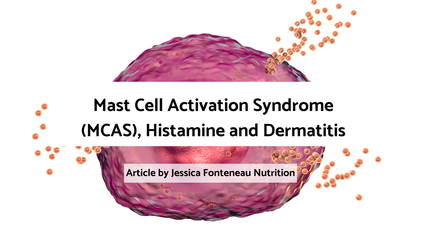
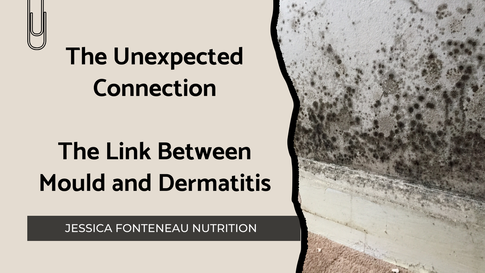
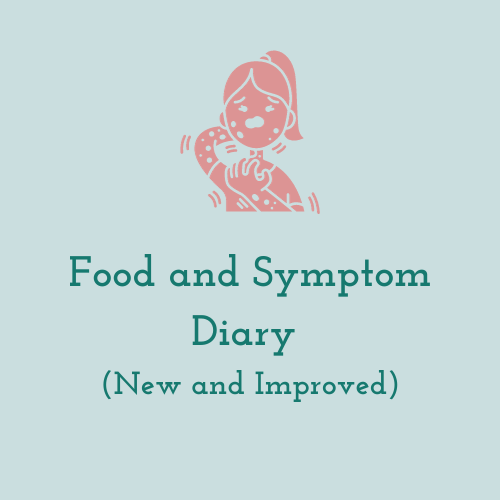
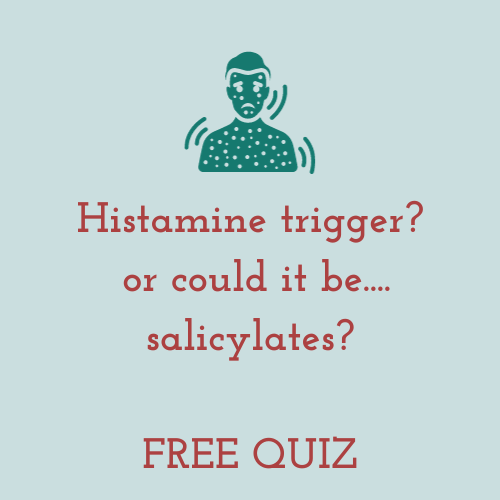
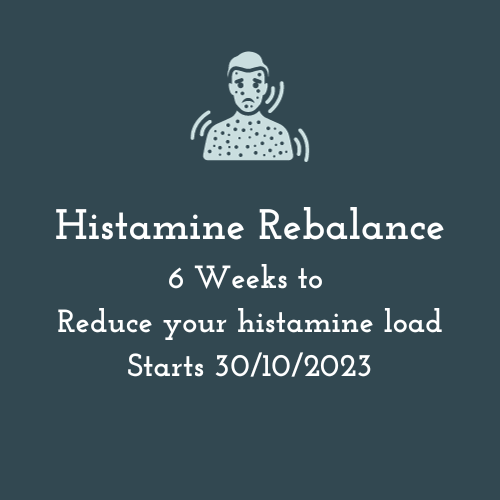
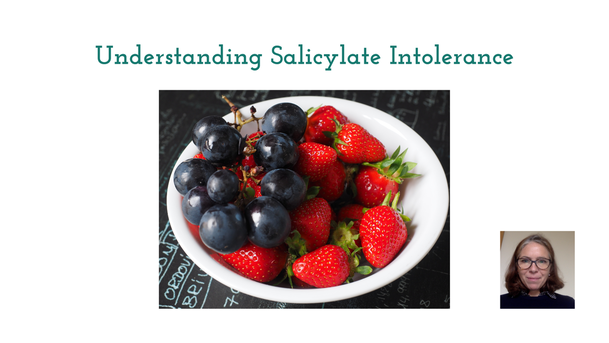
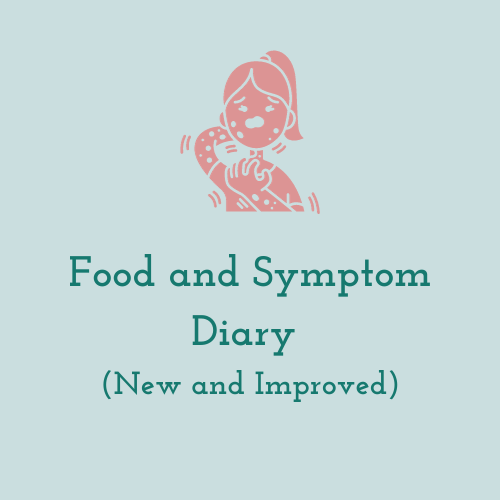
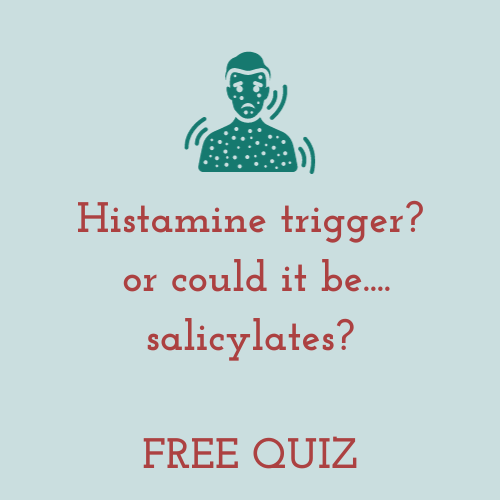
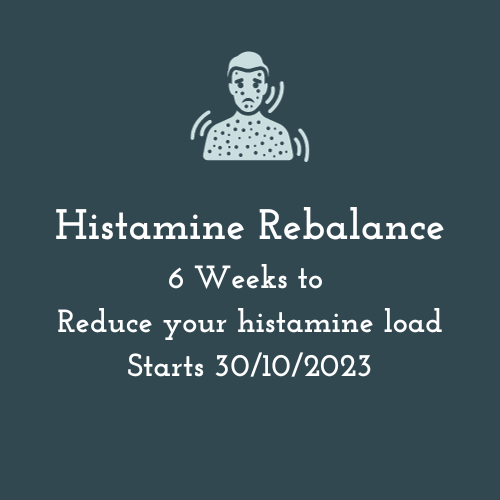
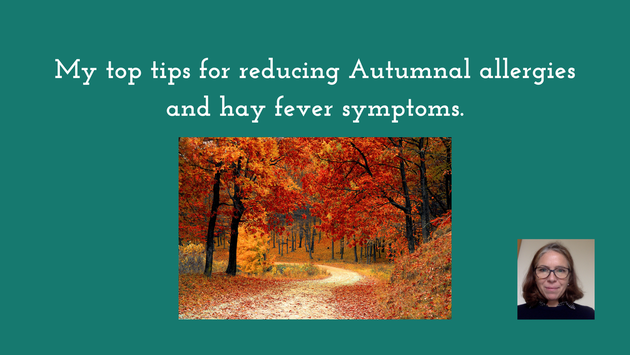
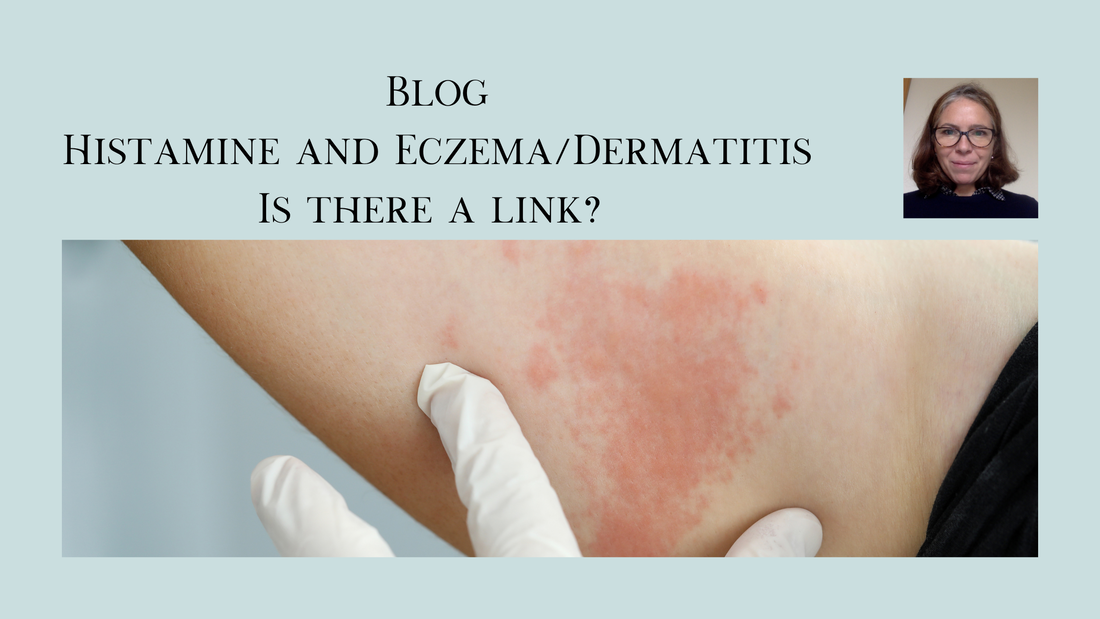
 RSS Feed
RSS Feed